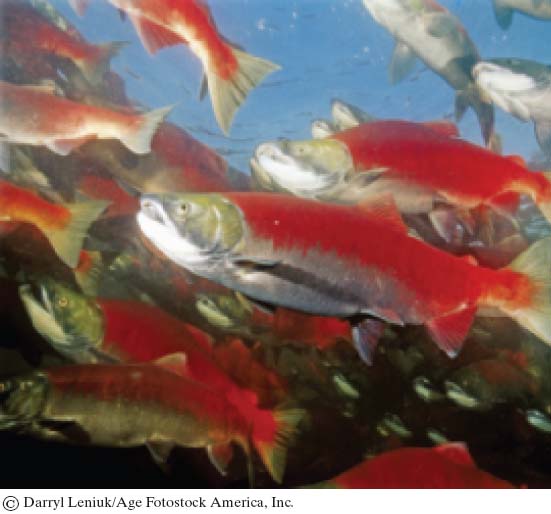CHAPTER 2
Limits and Derivatives
Figure 2.1 Biologists count spawning adult sockeye salmon to obtain a stock-recruitment relationship (see Figure 2.43).

Preview
“Mathematics, in one view, is the science of infinity.”
Philip Davis and Reuben Hersh, The Mathematical Experience, Birkhäuser Boston, 1981, p. 152.
Calculus, one of the great intellectual achievements of humankind, came to fruition through the work of Sir Isaac Newton (1642–1727) and Gottfried Wilhelm Leibniz (1646–1716). It consists of two parts, differential calculus and integral calculus, both of which hinge on the concept of a limit in which the behavior of a function is described as its argument approaches a selected limiting value. In this chapter, we first discuss some of the basic properties of a limit and the associated concept of continuity. Using limits, we then introduce the main concept in differential calculus: the derivative. This concept is one of the fundamental ideas in mathematics and a cornerstone of modern scientific thought. It allows us to come to grips with the phenomenon of change in the value of variables over increasingly small intervals of time or space (or any other independent ...
Get Calculus for Life Sciences now with the O’Reilly learning platform.
O’Reilly members experience books, live events, courses curated by job role, and more from O’Reilly and nearly 200 top publishers.

